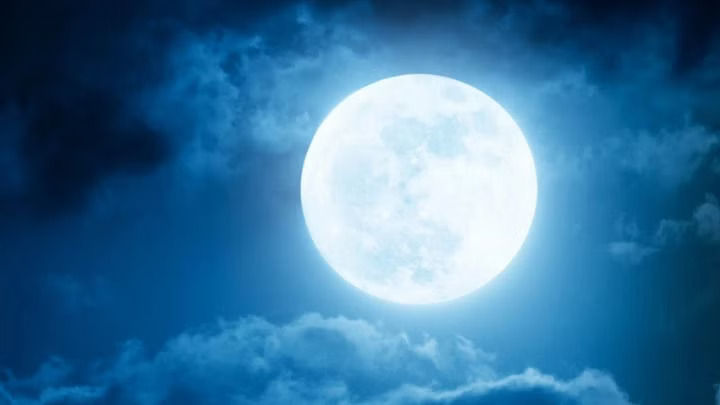Super Blue Moon Tonight; Know Time And When Will We See It Next Time?

New Delhi: One of the biggest and brightest moons of the year will rise on Wednesday. This full moon is referred to as a Blue Moon.
It is a rare celestial event that combines a second full moon in a month with the phenomenon of a Supermoon. It will be at its peak brightness at 08:37 pm (EDT) and can be seen just after sunset. This event is called a Super Blue Moon because it is the third and final full moon in the Northern Hemisphere and appears brighter and larger than usual.
Super Blue Moons are a very rare phenomenon that happen once in ten years due to astronomical changes. The events like two Supermoon occurrences in a month happened in 2018 and it will not be happening till 2037.
Blue Moon is commonly referred to as a “supermoon” due to its distance from Earth at the time of full moon. Because the moon’s orbit is elliptical, or oval-shaped, there are times when it is closer to Earth than others. When full moons occur while the moon is near its closest point to Earth (known as perigee), the moon can appear up to 14% larger in the sky. Though that size change is not quite enough to be noticeable to most skywatchers, it is enough to make these moons visibly brighter and worth making time to see in the night sky, according to Space.com.
These enlarged moons used to be referred to as perigean full moons, until the term “supermoon” caught on roughly a decade ago. Supermoons, while not a monthly occurrence, aren’t exactly rare; they can happen anywhere from two to five times a year. In fact, almost 25% of all full moons are supermoons, according to NASA.
A so-called “Super Blue Moon,” the combination of a Blue Moon and a supermoon, happens less frequently. While it’s possible for there to be two Super Blue Moons in one month, the average time between them is 10 years and they can be separated by as much as 20 years. The next Super Blue Moon won’t occur until 2037, when two will actually occur relatively close together — one in January and another in March, says NASA.

Comments are closed.